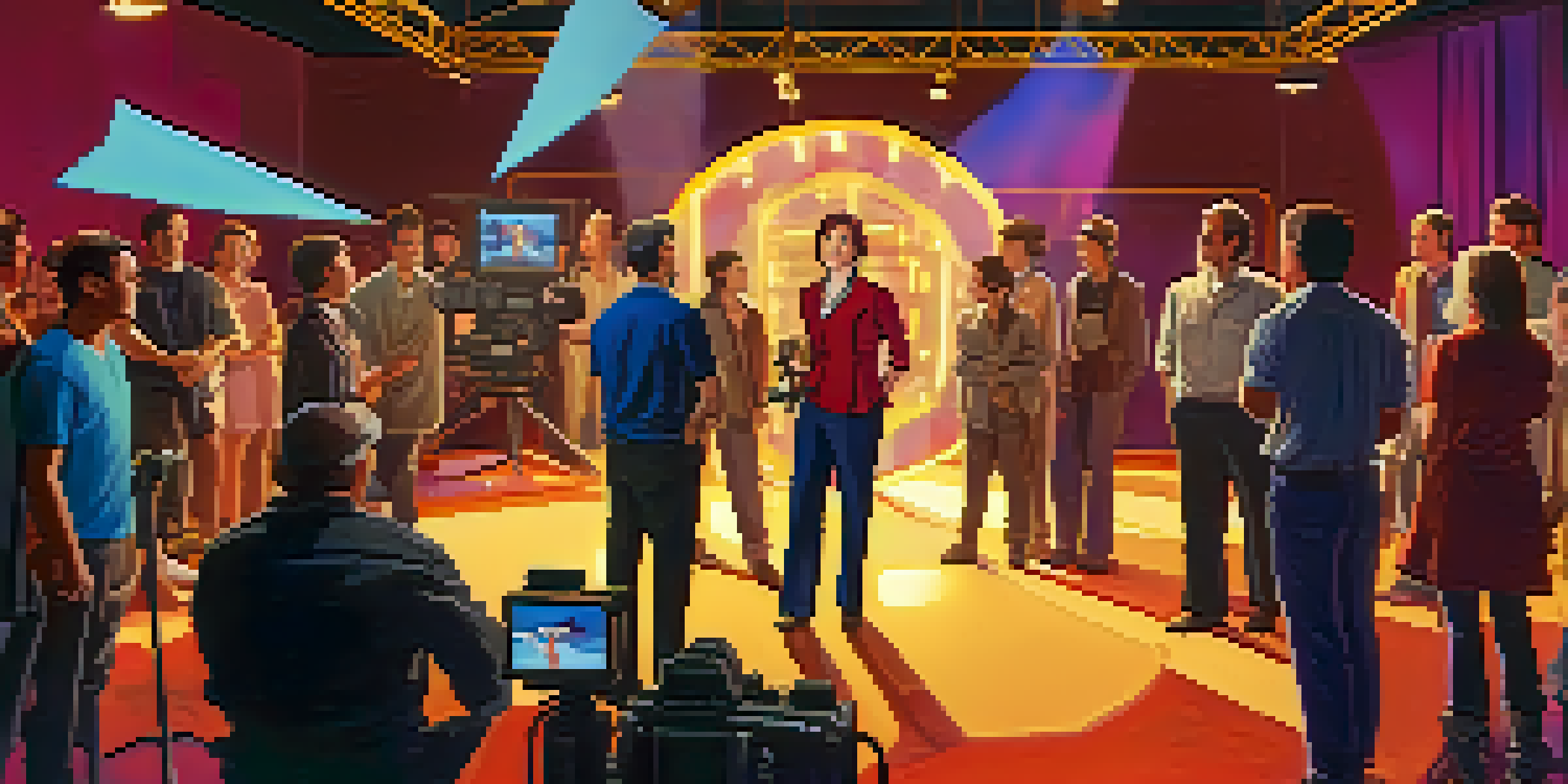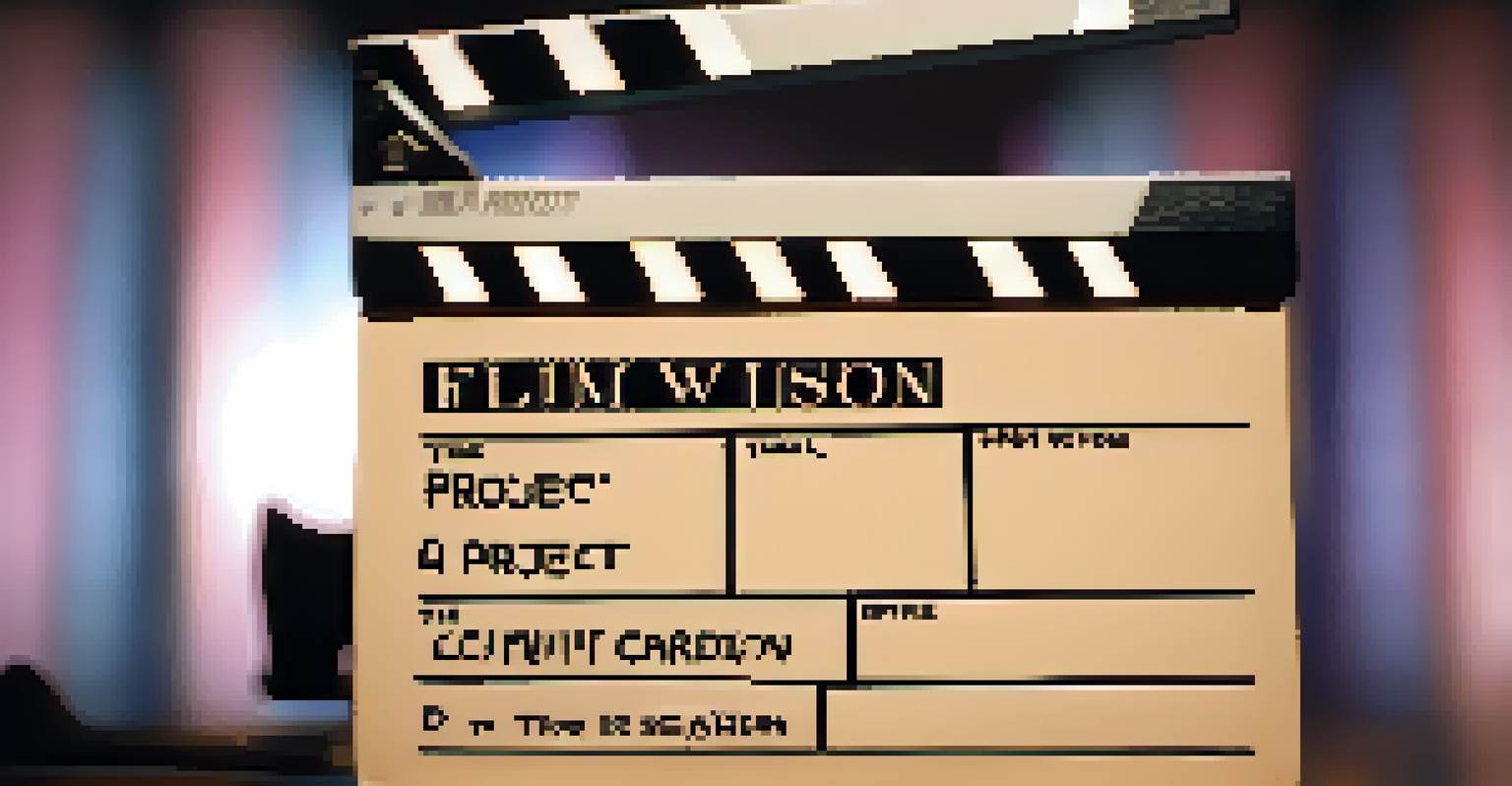The Director's Vision: Crafting the Narrative in Film

Understanding the Director's Role in Storytelling
A director is the captain of the ship when it comes to film production. Their vision guides the entire team, from actors to cinematographers, ensuring that everyone is aligned with the story's intent. It's not just about calling the shots; it's about weaving together various elements to create a cohesive narrative.
A film is never really good unless the camera is an eye in the head of a poet.
Directors interpret scripts and make decisions that impact how stories are told visually. They choose locations, design sets, and even influence the pacing of scenes, all of which contribute to how the audience perceives the story. This holistic approach is crucial in transforming a written script into a captivating visual experience.
Ultimately, a director's role is to breathe life into the narrative, making it relatable and engaging. The best directors understand that storytelling is an art form that requires both creativity and technical knowledge, balancing emotion with the mechanics of filmmaking.
The Importance of Vision in Film Direction
A clear vision is essential for a director to effectively communicate the story. This vision serves as a roadmap, guiding actors and crew members through the complex process of filmmaking. Without it, projects can easily become disjointed, leading to confusion and a lack of coherence.

For example, think of a film like 'Inception.' Director Christopher Nolan had a distinct vision that shaped the film's intricate narrative structure. His ability to convey complex themes of dreams and reality kept audiences engaged and challenged their perceptions throughout the viewing experience.
Directors Shape Film Narratives
Directors play a crucial role in transforming scripts into cohesive narratives by making creative decisions that enhance storytelling.
Moreover, a well-defined vision helps in making creative choices that resonate with the target audience. When directors stay true to their vision, they create films that not only entertain but also provoke thought and elicit strong emotional responses.
Crafting a Narrative: From Script to Screen
The journey from script to screen is a collaborative effort, and the director plays a pivotal role in this process. They analyze the script, identifying key themes, character arcs, and emotional beats that need to be emphasized. This analysis shapes how scenes are constructed and performed.
The director is the one who has to bring together all the elements of the film, and that’s what makes it an art form.
In addition to working with actors, directors collaborate closely with writers and producers to refine the narrative. This teamwork ensures that the essence of the story is preserved while also allowing for creative input and adjustments. It's akin to sculpting a piece of art—removing excess material to reveal the masterpiece beneath.
Ultimately, the director's ability to craft a narrative is reflected in how well the film resonates with its audience. A compelling narrative draws viewers in, allowing them to experience the story on a deeper level, making it memorable long after the credits roll.
Visual Storytelling: The Language of Film
Visual storytelling is at the heart of filmmaking, and directors are the translators of this language. They use framing, lighting, and camera angles to evoke emotions and set the tone for each scene. For instance, a close-up shot can convey intimacy, while a wide shot can create a sense of isolation.
Directors also rely on visual metaphors to enhance the narrative. These metaphors deepen the audience's understanding and emotional connection to the story, often communicating themes without explicit dialogue. Think of how the use of shadows in a horror film can create unease, heightening the suspense.
Vision Guides Filmmaking Process
A clear vision is essential for directors to effectively communicate the story and maintain coherence throughout the filmmaking process.
By mastering visual storytelling techniques, directors can engage viewers in a unique way, allowing them to experience the film rather than just watch it. This immersive approach is what elevates a film from being merely entertaining to being a powerful narrative experience.
Collaboration: The Director and Their Team
Filmmaking is a team sport, and a director's vision can only come to life through collaboration. Directors work closely with a variety of professionals, including cinematographers, production designers, and editors, each contributing their expertise to enhance the narrative. This synergy is crucial for creating a polished final product.
For example, the collaboration between a director and a cinematographer can significantly influence the film's visual aesthetic. Directors often rely on their cinematographers to bring their vision to life, ensuring that each shot aligns with the intended mood and message of the scene.
Moreover, fostering a positive working relationship with actors is essential for eliciting authentic performances. When actors feel supported and understood, they can deliver performances that truly resonate with the audience, further enriching the narrative.
Balancing Artistic Vision and Audience Expectations
Directors often face the challenge of balancing their artistic vision with the expectations of the audience. While creative freedom is important, filmmakers must also consider what resonates with viewers to achieve commercial success. Finding this balance can be tricky but is essential for creating a well-received film.
For instance, a director may have a unique storytelling approach that diverges from conventional methods. While this can lead to innovative films, there's always the risk that audiences may not connect with the material as intended. The key is to find a middle ground that satisfies both artistic integrity and audience engagement.
Collaboration is Key in Filmmaking
The success of a film relies on collaboration between directors and their teams, ensuring that every aspect of production aligns with the intended narrative.
Ultimately, the most successful films are those that manage to blend a director's vision with audience expectations. When this happens, it creates a rich viewing experience that is both thought-provoking and entertaining, leaving a lasting impression on viewers.
Case Studies: Directors Who Defined Their Narratives
Throughout film history, certain directors have carved out unique narratives that define their style. For example, Quentin Tarantino is known for his non-linear storytelling and sharp dialogue, which keeps audiences on their toes. His films, like 'Pulp Fiction,' exemplify how a strong narrative vision can create a cult following.
Another notable director is Greta Gerwig, whose work in 'Lady Bird' showcases a coming-of-age narrative filled with authenticity and emotional depth. Gerwig's ability to capture the nuances of adolescence resonates with audiences, making her films relatable and impactful.

These case studies illustrate how directors can shape narratives that not only reflect their vision but also resonate deeply with viewers. Their distinctive storytelling approaches contribute to the rich tapestry of cinema, inspiring future filmmakers to develop their unique voices.